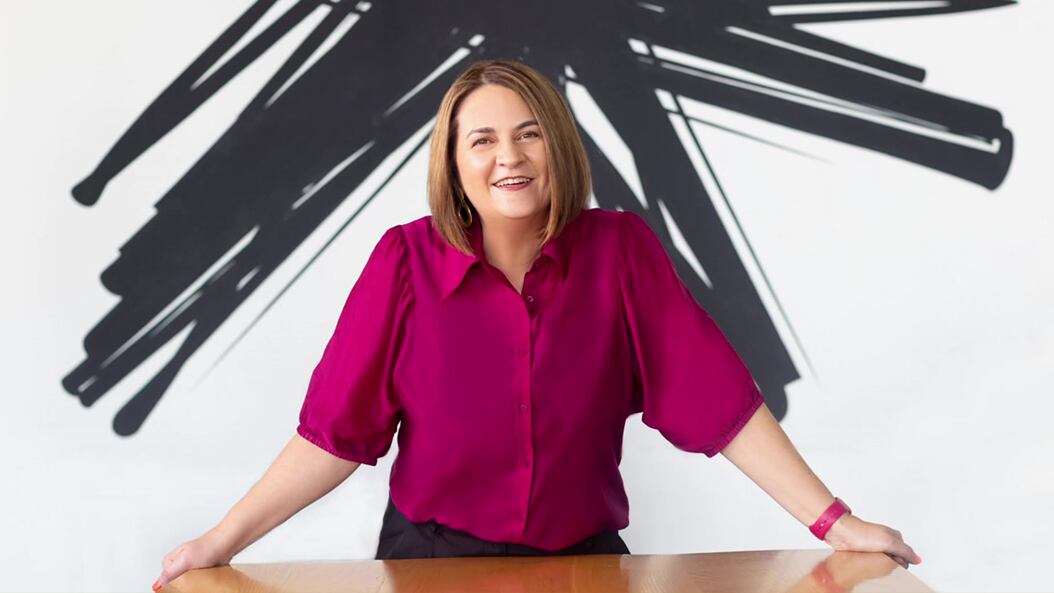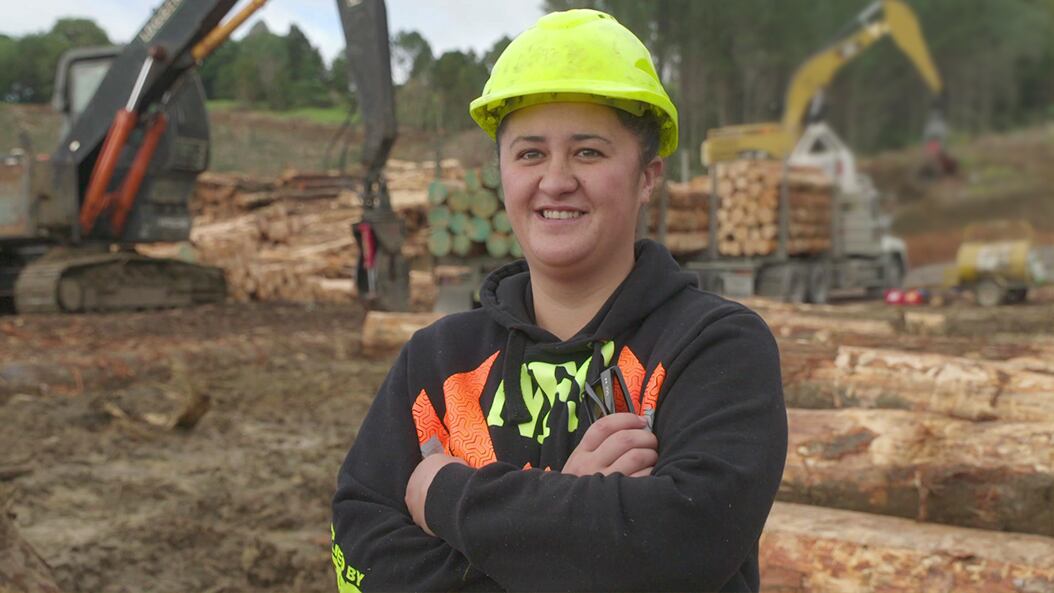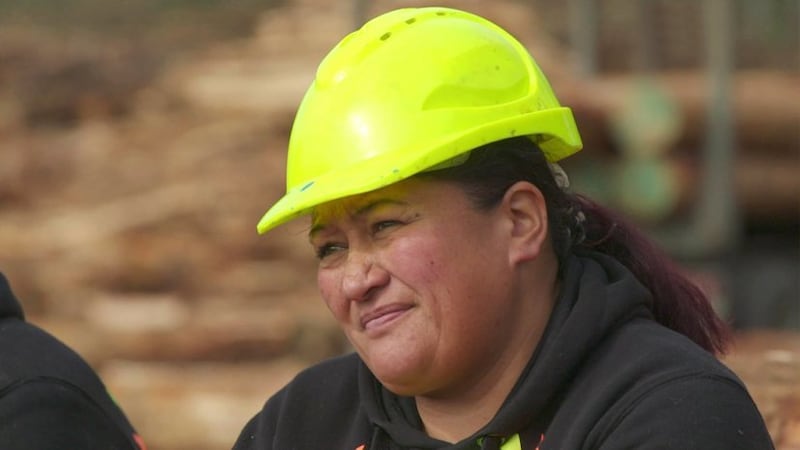This week on Māori Television's Te Ao with Moana, reporter Ximena Smith meets four wāhine who work in three very different industries. But they have one thing in common - the mahi they do is usually done by tāne.
Jolie Hodson is one of New Zealand’s most powerful women in business.
But the Spark chief executive doesn’t miss a beat when asked if she’s ever experienced discrimination in the workplace for being a woman.
“I've had things earlier in my career where I worked in Australia for a while - I worked for Lion then, in alcohol. So I was out on the trade, and you’ll have publicans or retail stores assume that maybe you’re the assistant helping. Nothing wrong with being an assistant, but the reality is, they just take that bias and assume,” Hodson recalls.
Can be isolating
“I've always worked with colleagues that are very careful to go, ‘well, actually, she's the one who's going to make the decision about whether you get your funding for your venue’.”
When Hodson first joined Spark (then Telecom) in 2013 as chief financial officer, she was the only female on the company’s leadership squad for several years.

She admits being in that position could sometimes be isolating.
But she believes that leadership appointments like her own can have positive flow-on effects in terms of paving the way for others.
“I think part of it is about bringing diversity of thought, demonstrating what you can achieve with that. And then it starts to open up what's possible in terms of different people getting an opportunity in that same space.”
70:30 skew
Now, Hodson’s executive team at Spark is 50:50 male to female. The board is also 50:50.
However, she’s under no illusion that all is rosy in the world: she is one of only four female chief executives on the NZX50.
She says the tech sector has roughly a 70:30 male to female skew.
Asked why she thinks these disparities exist, Hodson thinks bias certainly plays a part.
“If you have a homogenous group together, your thinking and your perspectives are built on what you know and what you've done and what you've seen,” she says.
“There is also a component of how attractive it is to want to come into an industry. You can’t be what you can’t see, that view of it. So, ‘why would I want to join if I don’t see a lot of people like me?’ But I think there’s a series of things that impact and influence us.”
Should be ‘at home’
Jenny Tautari, a logger based in Northland, also says she experienced discrimination early in her career when she started in the industry 20 years ago.
“It was hard because the older generation was a lot harder, you know? And they were like, ‘oh, what are you women doing in here? You should be at home with the kids,’” Jenny says.
She also remembers once being told by a male company owner that a woman should be at home at the kitchen sink.
But Jenny reckons this type of explicitly sexist thinking is much less common now, and the number of women in the logging industry is on the up.

Her daughter, Helen Abraham, is among these newer female faces in the industry, having joined her mum on the job six years ago.
Heavy lifting
The two now work alongside each other every weekday - one will be in the harvester cutting the logs down to size, the other will be in the digger stacking the logs, and then they’ll swap.
Jenny says it’s a labour-intensive, physical job - there is a lot of heavy lifting involved, and loggers need to be mechanically minded and know how to fix things. These are just a few of the reasons why it’s a field mostly dominated by men, she says.
But she believes the efforts both she and Helen have put in to get the training has helped them succeed alongside their male workmates.
“I think in the past 10 years, because I've got the skills, they haven't really got much to argue with,” Jenny says. “I'm not as physically strong as them, machine-wise, and mentally. But I think she [Helen] got it not too bad too because I was able to train her.”
Counting women
Another field that is similarly dominated by men is behind-the-scenes in the music industry.
Emily Wheatcroft-Snape, an audio engineer and producer, says that women make up only about 5% of engineering and producing roles.
“If you go into [audio] engineering Facebook groups and that kind of thing, you'll find the vast majority of them will be men, and you can count the women in those groups,” she says.

Wheatcroft-Snape graduated from MAINZ with a bachelor of audio engineering and music production in 2017. She says the low numbers of women in the wider industry were reflected in her class when she began her studies, with three to four females out of 30-40 students.
She reckons women get discouraged from pursuing a career in the industry for a number of reasons.
Crazy hours
“I think it’s a culture thing. Studios are quite isolating environments. You need to have a team around you that feels very safe and supportive… and then it's also very competitive in general. So if you're only getting a smaller percentage coming in and it's competitive, then you're also going to have less on the output as well,” she explains.
Wheatcroft-Snape says workload pressure is another factor that could discourage women, especially for those that want to have a family.
“Unless you have a plan, [the industry] isn't necessarily supportive of that, because you're freelancing, or you're working for a big studio, which is like, crazy, crazy hours,” she says.
Learning all the career options
Wheatcroft-Snape says her experiences of discrimination in the industry are often quite subtle, and can even be well-intentioned.
“A lot of the stuff that you get is actually more subconscious. People don't realize that they're doing it, which is very hard to call out or improve upon…. One of my least favorite things is when I'm in studio and someone goes, ‘and isn't it great that there's a female in here!’ And I'm like, ‘shut up’, you know?”
Wheatcroft-Snape believes addressing gender discrepancies in the recorded music sector starts in education, by making sure smart young women coming out of high school know about all of the career options available to them, and don’t feel pressured to follow more traditional ‘brainy’ pathways.
“If you’re a smart young woman, you get pushed into [certain] subjects, you get pushed into going to university. Doing a creative field or a field that not many people have heard of isn't seen as a good path for you, even if that's what you could be good at.”
Giving that first chance
Spark’s Hodson agrees education is key, and that it’s crucial to build the number of young women coming out of education facilities who are interested in technology and see something in it for them.
When it comes to more women in executive roles, Hodson says it’s important for leaders to give people the right opportunities to broaden out their skillset within an organisation.
“If I think about my career, I've worked across many industries, but I've also had opportunities to move into roles where I got operational experience, I got selling experience, I got to lead large teams. They're all things that are important when you start to think about stepping up into a bigger executive role where you're running a whole business,” she says.
“You've got to deliver, nobody’s going to give you a free ride anywhere. But if you haven't had that chance early on, how do you have the skills and capabilities to make that move and be even considered for the opportunity?”
Hear more about these women’s experiences working in male-dominated industries by watching the full Te Ao with Moana video at the top of this story.

